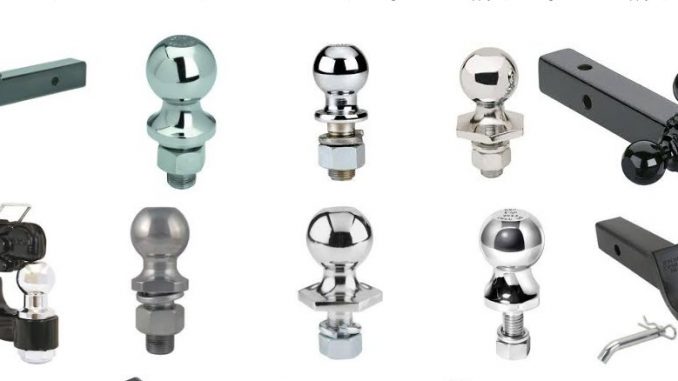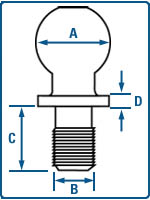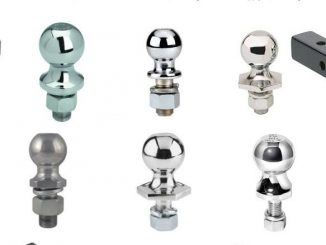
Cars, trucks, RV’s and vans all have something in common; they can all use ball hitches. These are the most widely used hitch and the simplest to install and use. They are simple contraptions that use simple technology. Unlike some of the other hitches (Fifth wheel, gooseneck hitches) they take up very little space and there is no complicated installation process.
Ball hitches are generally made of chrome or other hard metal. They attach directly onto the back of your vehicle or onto a tongue. They take up minimal space. If you want them to take up less space than they already do, you can get foldable ball hitches that fold beneath the car or truck when they are not in use.
There are even more options when it comes to the ever popular ball hitch. Let’s say that you have two trailers that use two different size balls. You can now buy a two ball hitch. These useful devices can swivel so that you can change the size of the ball that is in use. The unused ball hangs from the bottom and can be swiveled upwards when you want to use it.
Of course, the ball hitch can’t handle as much weight as some of the other hitches. They just aren’t made to haul heavy loads. They are primarily made for small trailers and the like. If you want a hitch for hauling large, heavy objects, you will have to look at getting a fifth wheel hitch or a gooseneck hitch.
When buying a ball hitch, you should make sure that the hitch you buy will fit the vehicle you are attaching it too. This problem crops up primarily with motorcycles. Some ball hitches aren’t made for some types of motorcycles. You should talk to the dealer or look in your owner’s manual to find out what your towing capacity is and you should make sure that the hitch you eventually buy will fit your vehicle as well.
A. Ball Diameter
B. Shank Diameter
C. Shank Length
D. Standard Lift
Weight rating of Hitches
| Class | Maximum Trailer Weight* | Tongue Weight Limit | Receiver Tube Dia. | Vehicle Attachments |
|---|---|---|---|---|
| I | 2,000lb. | 200lb. | 1 1/4″ | Bumper and 2 points on frame |
| II | 3,500lb. | 350lb. | 1 1/4″ | At least 2 points on frame |
| III | 8,000lb. | 800lb. | 2″ | At least 4 points on frame |
| IV | 10,000lb. | 1,200lb. | 2 1/2″ | At least 4 points on frame |
| V | 12,000lb. | 1,400lb. | 2 1/2″ | At least 4 points on frame |
| *Includes weight of trailer, boat and gear. | ||||
Another thing that you should keep in mind is that the ball hitch must be properly installed. If not, you could find that your trailer swings too much, or you can lose your load all together.
There are also several types of ball hitch. The bigger balls can usually tow more weight than the smaller balls. You should make sure that the ball hitch you buy is able to tow the weight you intend to use it for.
Most trucks come with a ball hitch already installed. If you’re buying a truck, and you know that you will be towing something, you might want to look at buying a truck that comes with a preinstalled hitch. If the truck you want to buy doesn’t have one preinstalled, ask the dealer to install one for you before you buy it. Most of the time, a dealer will think it is a small price to pay in order to make the sale.
While ball hitches are not for everyone, they are good enough for most of the towing needs a regular, everyday person will run into in the course of their lifetimes. They are relatively inexpensive and easy to install. They can be installed on any type of vehicle and they are extremely easy to use.
Just remember to take the required safety precautions when installing them and everything should work out fine. Choose the one that will best suit your needs, and don’t buy the cheapest hitch on the market. You will probably use the hitch you purchase for many years to come, so a quality hitch is worth its weight in gold.
Trailering Safety &
Trailer Hitch Information
Trailer Hitches – Ideas On
How To Choose The Right One
About the Author
Scott Gray is a freelance author and web site publisher who provides useful information and money saving tips about trailer hitches, ball hitches and trailer hitch accessories.


